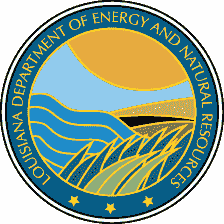Office of Coastal Management
DNR notes first coastal project to invoke new beneficial use rules
The Louisiana Department of Natural Resources’ Office of Coastal Management has accepted the first contribution to the Coastal Resources Trust Fund tied to a project making use the state’s rule changes on the beneficial use of material dredged in projects requiring a coastal use permit.
The project also highlights the state of Louisiana’s ongoing concern about the U.S. Army Corps of Engineers’ dumping of tens of millions of cubic yards a year of dredged material into areas that not only do not benefit the effort to preserve the coast, but can actually worsen the problem of coastal erosion.
Energy Partners Ltd. has paid the state about $28,000 – based on the number of cubic yards of material the company will be dredging for a project involving the maintenance dredging of an access canal near Pass-A-Loutre in Plaquemines Parish.
The new beneficial use rules were crafted to allow in-lieu contributions instead of direct use of the dredged material for projects where direct use of the soil on beneficial coastal projects is not feasible due to quality of soil or the expense of transportation. Several smaller projects such as the Energy Partners dredging can bring contributions to the Coastal Trust Fund that can be combined to fund larger projects.
The rules for beneficial use adopted by the Office of Coastal Management last year include four options for permit applicants involved in coastal projects that include dredging – implementing a project that makes beneficial use of the dredged material, providing for the use of the dredged material on an approved coastal restoration project, using dredged material at another location that creates the same amount of beneficial use, or making a voluntary contribution to the Coastal Resources Trust fund, based on the amount of material dredged.
Beneficial use refers to taking material dredged for a project and using it to provide soil to help build or protect coastal wetlands. The intent of the new rules is to ensure as much material as possible from dredging projects under state regulation is put to that beneficial use.
The beneficial use rules apply to any project requiring a state coastal use permit that involves dredging 25,000 cubic yards or more to facilitate the movement or mooring of vessels. The amount of material in eligible projects has amounted to about 3 million cubic yards annually, though only about 22 percent of it was put to beneficial use under the old program.
“Our rules for beneficial use of dredged material give us the opportunity to ensure that 100 percent of these kind of projects result in a contribution – either in dollars, soil or projects – that strengthens our coast, “ said DNR Secretary Scott Angelle. “It is critical that we do not waste the resources our eroding coast needs to continue to protect our people and our property.”
Windell Curole, general manager of the South Lafourche Levee District , said the coastal problem in Louisiana requires every bit of soil the state can muster to strengthen the coastline.
“Beneficial use is one of the best ways of working to keep what we still have left,” he said. “I have had great response and support from DNR on beneficial use.”
Ted Falgout, retired executive director of Port Fourchon, agreed with Curole on the need for beneficial use on the coast and said he was glad to see that companies are beginning to make use of the new rules.
“It’s a great beginning, and hopefully only a beginning of a much larger use of the dredged material,” he said. “We certainly applaud the effort.”
Angelle noted, however, that the greatest generator of dredged material that could bolster the coast – the Corps of Engineers – still only makes of beneficial use of 12 percent of the 60 million cubic yards of sediment it dredges from navigation channels in an average year.
Much of the wasted sediment has historically been dumped in open water at the head of Pass-A-Loutre, which has resulted in the blocking of fresh water and sediment flow to the eastern Mississippi Delta and an acceleration of the loss of coastal wetland, said Lou Buatt, assistant secretary for DNR’s Office of Coastal Management.
Energy Partners noted in the permit application for its Pass-A-Loutre dredging project that the Corps of Engineers’ dumping contributed to the silting in of its access channel, necessitating the dredging project.
DNR, in December 2009, took the latest step in the years-long continuing effort to require the Corps of Engineers to make beneficial use of the sediment it produces in the maintenance dredging in the area of the Mississippi River’s Southwest Pass by calling for U.S. Secretary of Commerce Gary Locke to assist by mediating between the state and the Corps of Engineers.
Locke indicated in a March letter to the state that the Corps of Engineers has not responded to the state’s request to begin the mediation process set forth in federal law.
“We are only asking that the Corps of Engineers follow the same standards and rules that we require of every other dredging project in the state’s Coastal Zone,” Buatt said.
Curole said that stakeholders in the coast believe that the material dredged by the Corps of Engineers in Louisiana should belong to the state.
“It should be put where the state of Louisiana needs it,” he said.
News Archives »